The 43 heifers nearing finish on the Thrive Hally Farm in Tipperary have started to get meal at grass to help bring them closer to slaughter weight and finish ahead of winter.
The specially selected heifers are now 18 months of age on average and it is expected that some heifers will be fit for slaughter in the coming weeks.
They are still at grass full-time, but come in and out to the shed every day to eat just shy of 2kg of nuts (Beeflav at €275/t).
At the moment, they are eating 1.7kg of nuts (three 25kg bags between 43 heifers). It took them a few days to get used to eating the nuts, but now 10 days into meal feeding they have the 2kg/head of meal allocated cleaned up in less than 10 minutes.
Remember they are still on very good grass, moving between paddocks every three or four days depending on how much grass is in the paddock.
Cleaning out
They are cleaning out the paddocks, taking the grass down tight into the dungpats.
These dairy-bred stock are very easy to work with and every morning they walk up the farm road, into the shed and eat the nuts.
You could of course feed them in the field as ground conditions are good in this part of Tipperary, near Cashel, but the farmer wants to prevent mucking of the paddock as much as possible.
Routine
His routine is solid and rain, hail or shine, the short walk to the shed is possible and there is no mucking or excessive dunging in one part of the paddock.
A fair question to ask is why feed all the heifers and why not select out the lighter or heavier heifers for meal feeding.
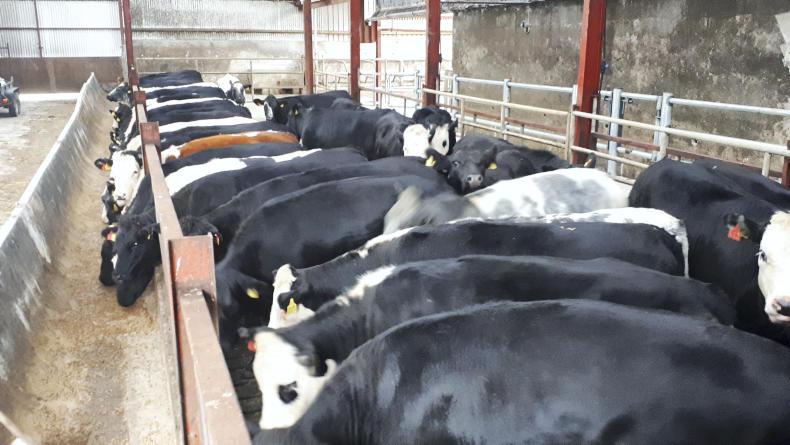
The heifers lined up in the shed on the slats with rubber matting.
The reasons below are a mix of practical and research-based answers. However, on other farms depending on the resources, the plan and the circumstances, it might be better to feed a smaller group.
This group of stock ranges in age by about five weeks so the intention is to continue to manage them as a group as they have been for the last 18 months.
Decision
The decision was taken to feed all based on:
The objective is to get most if not all of these heifers away before the second winter.Keeping them in one group makes the grazing part easier and you move through paddocks that bit quicker. The heifers near finish will be selected shortly and that will leave a reducing number for meal feeding. The facilities are available to make it happen on this farm – the farm road, the shed etc.Teagasc research has shown that feeding a small portion of meal to animals near finishing will return in money terms because of better carcase confirmation and weight. The younger group of calves on this farm and bullocks are at grass full-time and demand for grass is increasing as grass growth starts to go the other way so purchasing more meal is not leading to substitution of other feed on the farm.The heifers are a mix of Hereford, Angus, Limousin and Belgian Blue all out of black and white cows. They were purchased as part of a group of 102 calves last year at an average price of €282 per calf. Based on the most recent weighing and assuming a weight gain of 1kg/day the bunch of heifers are averaging over 500kg liveweight.
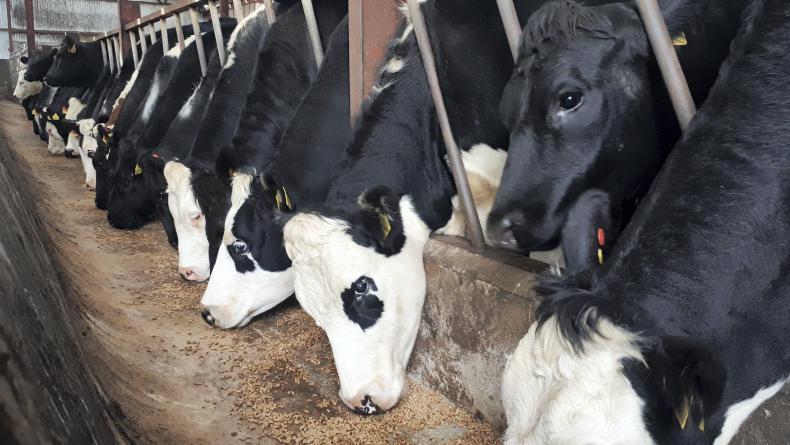
The finishing heifers eating up the beef nuts in the concrete feed trough at the feed barrier.
The range is about 100kg, between 460kg for the lighter younger heifers to 560kg for slightly older and heavier heifers.
At the last weighing the Hereford heifers were slightly ahead of the other breeds on average by about 20kg/head. See more at www.farmersjournal.ie.
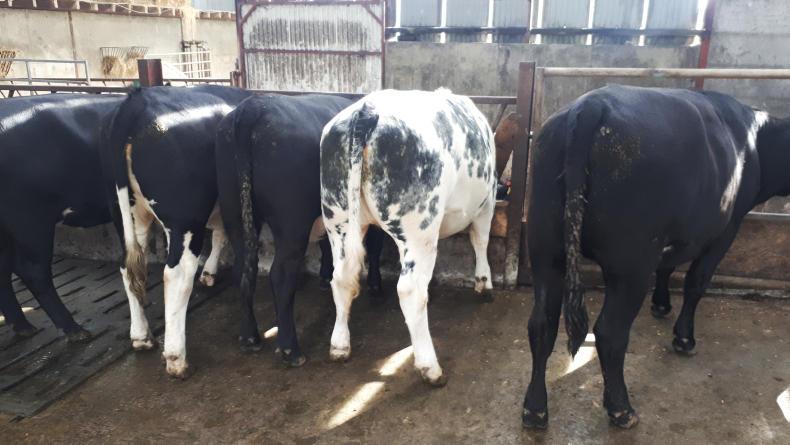
Finishing heifers view from behind as they eat 2kg of beef nuts in the shed before going back out to grass.
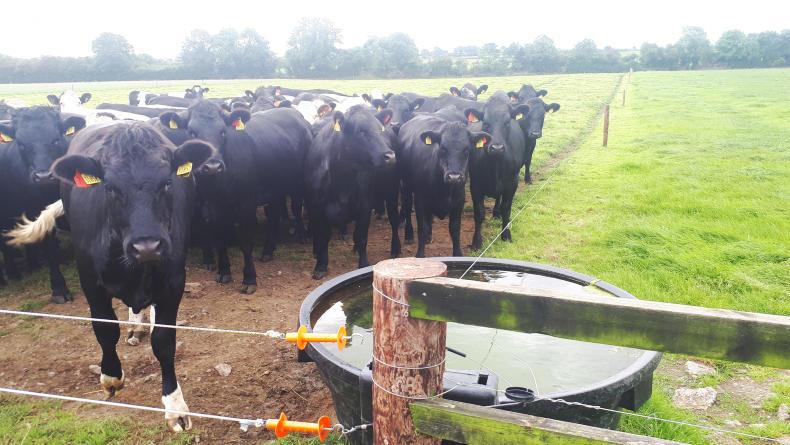
The heifers move to a new paddock every three of four days. They are cleaning out the paddocks well. They finished the paddock they are in today and moved into the paddock on the right that has a heavy cover of about 1800kg but is green to the base.
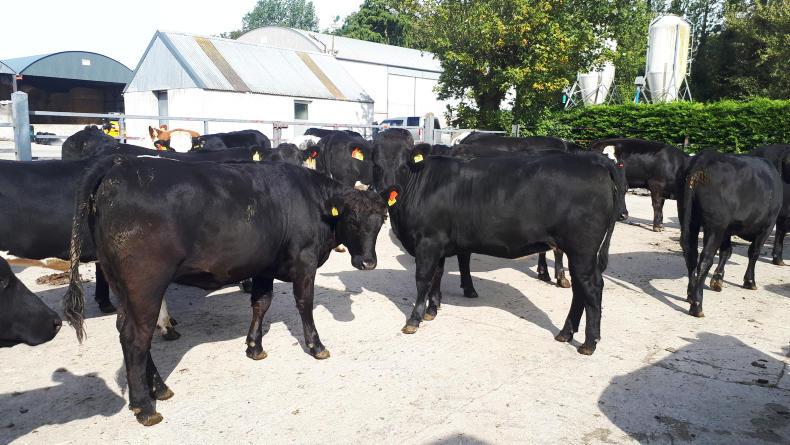
The heifers standing in the yard before they go back down the farm road and out to the paddock. The range in weight is about 100kg, ranging from 460 to 560kg.
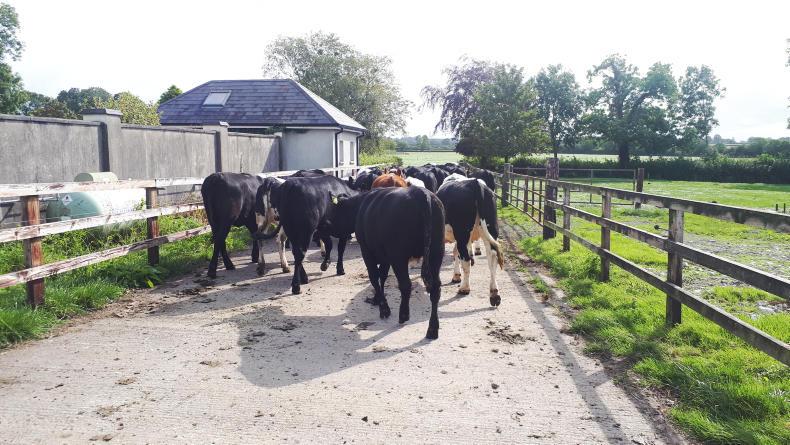
The heifers on the way back to grass down the farm road after eating 2kg of meal in the shed.
The 43 heifers nearing finish on the Thrive Hally Farm in Tipperary have started to get meal at grass to help bring them closer to slaughter weight and finish ahead of winter.
The specially selected heifers are now 18 months of age on average and it is expected that some heifers will be fit for slaughter in the coming weeks.
They are still at grass full-time, but come in and out to the shed every day to eat just shy of 2kg of nuts (Beeflav at €275/t).
At the moment, they are eating 1.7kg of nuts (three 25kg bags between 43 heifers). It took them a few days to get used to eating the nuts, but now 10 days into meal feeding they have the 2kg/head of meal allocated cleaned up in less than 10 minutes.
Remember they are still on very good grass, moving between paddocks every three or four days depending on how much grass is in the paddock.
Cleaning out
They are cleaning out the paddocks, taking the grass down tight into the dungpats.
These dairy-bred stock are very easy to work with and every morning they walk up the farm road, into the shed and eat the nuts.
You could of course feed them in the field as ground conditions are good in this part of Tipperary, near Cashel, but the farmer wants to prevent mucking of the paddock as much as possible.
Routine
His routine is solid and rain, hail or shine, the short walk to the shed is possible and there is no mucking or excessive dunging in one part of the paddock.
A fair question to ask is why feed all the heifers and why not select out the lighter or heavier heifers for meal feeding.

The heifers lined up in the shed on the slats with rubber matting.
The reasons below are a mix of practical and research-based answers. However, on other farms depending on the resources, the plan and the circumstances, it might be better to feed a smaller group.
This group of stock ranges in age by about five weeks so the intention is to continue to manage them as a group as they have been for the last 18 months.
Decision
The decision was taken to feed all based on:
The objective is to get most if not all of these heifers away before the second winter.Keeping them in one group makes the grazing part easier and you move through paddocks that bit quicker. The heifers near finish will be selected shortly and that will leave a reducing number for meal feeding. The facilities are available to make it happen on this farm – the farm road, the shed etc.Teagasc research has shown that feeding a small portion of meal to animals near finishing will return in money terms because of better carcase confirmation and weight. The younger group of calves on this farm and bullocks are at grass full-time and demand for grass is increasing as grass growth starts to go the other way so purchasing more meal is not leading to substitution of other feed on the farm.The heifers are a mix of Hereford, Angus, Limousin and Belgian Blue all out of black and white cows. They were purchased as part of a group of 102 calves last year at an average price of €282 per calf. Based on the most recent weighing and assuming a weight gain of 1kg/day the bunch of heifers are averaging over 500kg liveweight.

The finishing heifers eating up the beef nuts in the concrete feed trough at the feed barrier.
The range is about 100kg, between 460kg for the lighter younger heifers to 560kg for slightly older and heavier heifers.
At the last weighing the Hereford heifers were slightly ahead of the other breeds on average by about 20kg/head. See more at www.farmersjournal.ie.

Finishing heifers view from behind as they eat 2kg of beef nuts in the shed before going back out to grass.

The heifers move to a new paddock every three of four days. They are cleaning out the paddocks well. They finished the paddock they are in today and moved into the paddock on the right that has a heavy cover of about 1800kg but is green to the base.

The heifers standing in the yard before they go back down the farm road and out to the paddock. The range in weight is about 100kg, ranging from 460 to 560kg.

The heifers on the way back to grass down the farm road after eating 2kg of meal in the shed.










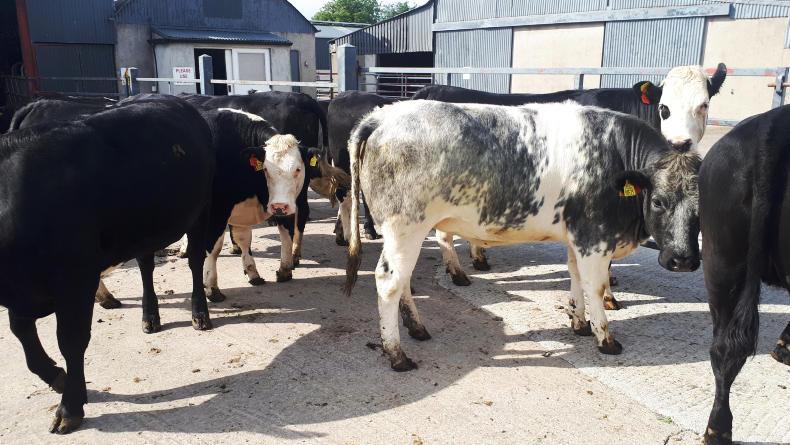
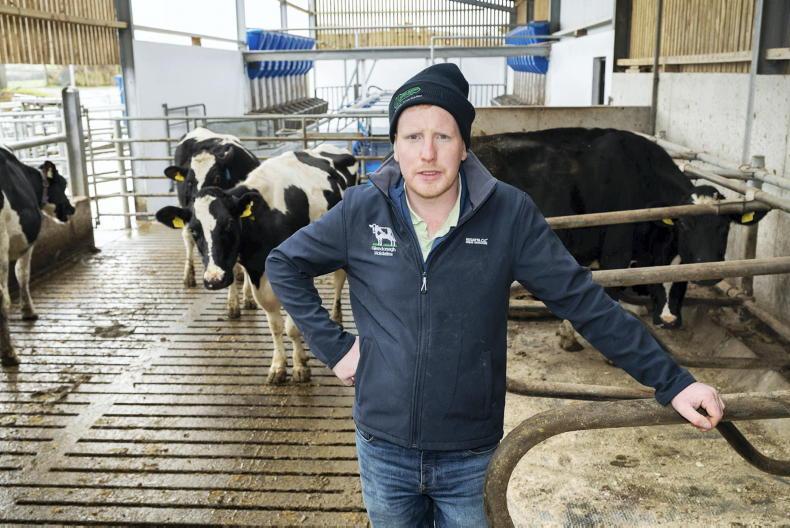
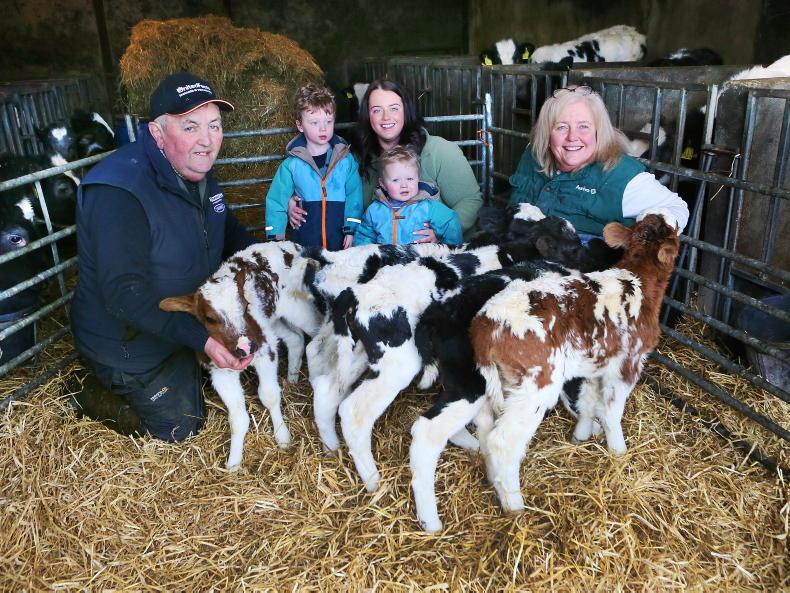
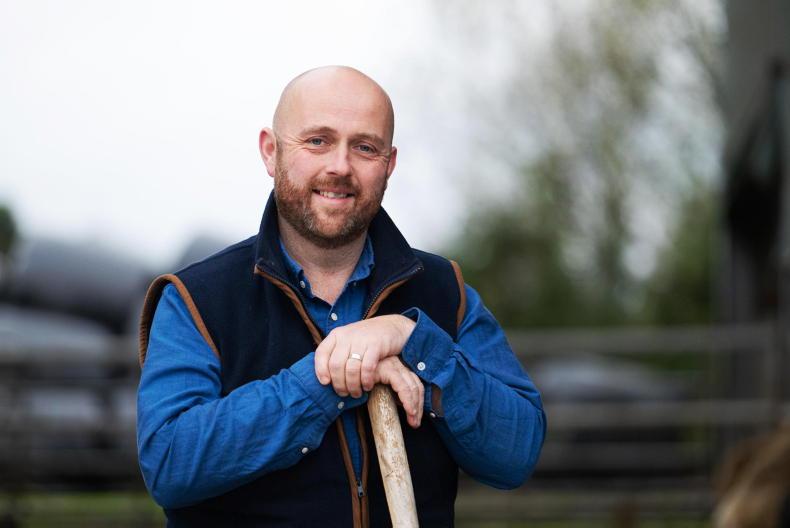
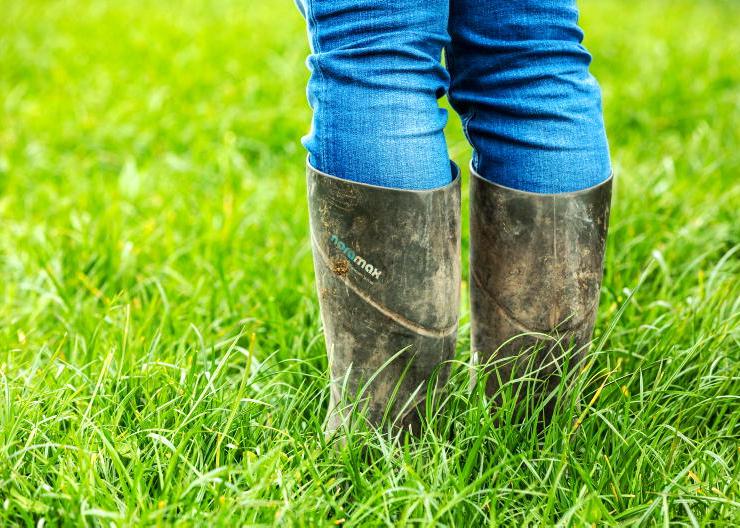
SHARING OPTIONS